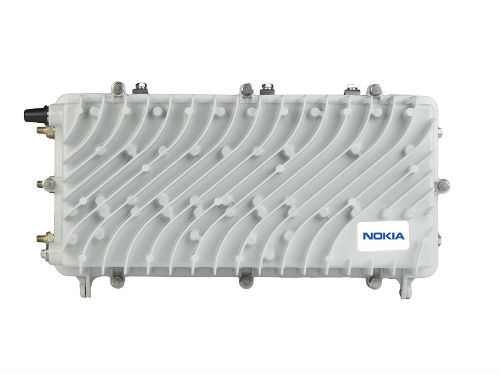Nokia Touts Versatility With Virtualized Distributed Platform for Cable Operators

There’s been a debate roiling in cable engineering circles about the pros and cons of Remote PHY and Remote MAC/PHY, options being weighed as operators mull new Distributed Access Architectures (DAA) that aim to boost capacity while also reducing their power and space requirements in the headend or hub.
Nokia holds that the debate has been rendered moot following the debut of a new virtualized DAA platform that features a “universal” cable access node that can be configured to run as a Remote PHY (RPD) device or Remote MAC/PHY (RMD) device.
In addition to reducing space and power requirements, cable operators are also looking for DAA to improve the fidelity of the outside plant and to help them drive more capacity for DOCSIS 3.1 and set them up for Full Duplex DOCSIS, an annex for D3.1 that will support multi-gigabit symmetrical speeds and require a node+0/deep fiber network in which there are no amplifiers between the node and the home.
The new node, Nokia claims, can turn the MAC portion on or off, because it’s been reduced to an independent software virtual network function that can be controlled remotely by the cable operator.
“We believe we’ve ended the debate,” Jeff White, head of cable strategy at Nokia’s fixed networks group, proclaimed, holding that the dividing line between the two options is now “quite small” and that this is the sort of breakthrough that makes this part of the architecture decision a secondary one for MSOs.
He added: “It’s a piece of software” that can run in a server, in a traditional CCAP [converged cable access platform] chassis or in the node itself.
Nokia, whose work in this area stems from its 2016 acquisition of Gainspeed, plans to show off its new platform at next week’s SCTE•ISBE Cable-Tec Expo in Denver.
Multichannel Newsletter
The smarter way to stay on top of the multichannel video marketplace. Sign up below.
The product set and features for Nokia’s virtual DAA platform include a virtualized CMTS (that includes the DOCSIS MAC), the aforementioned universal node, and an access controller that can support both Remote PHY and Remote MAC/PHY.
Nokia’s move will also put some completive heat in other vendors that have launched or are developing DAA products, a group that includes Arris, Cisco Systems, Casa Systems, Harmonic and Huawei.
The toggling capability represents a new approach for Nokia, as Gainspeed had previously been pushing a technology agenda that centered on Remote MAC/PHY. White said the “light bulb went off” about this more flexible approach as operators started to think more critically about their network functions virtualization (NFV) and software-defined networking (SDN) strategies.
White said Nokia has found that operators are looking at both options, as one or the other might work better under circumstances, scenarios and conditions.
If space in the headend is major issue, he said, a Remote MAC/PHY approach might make more sense, and allow operators to reduce or eliminate hubs. Remote MAC/PHY might also be better suited for a strategy in which an MSO is looking to centralize and virtualize the bulk of the command and control mechanisms from a centralized system or data center.
Remote PHY, he added, might be a better option if power is limited in the cable operator’s outside plant, as a Remote MAC/PHY node is likely to require between 5% to 10% more power than a Remote PHY node, which requires less processing horsepower.
White said operators are looking at a “cap and grow” approach to DAA as well as some specific use cases, such as a “hotspot” on the network or in contested MDU environments. Still others might go at it hub-by-hub as they look to consolidate those.
Nokia hasn’t announced any deployments, but Comcast, Liberty Global and WideOpenWest were among the MSOs that praised Nokia’s acquisition of Gainspeed last year. At the time, WOW said it was “well down the path" with testing and "preparing for deployment" of Gainspeed's vCCAP.
“Nokia is revolutionizing the cable industry with an innovative new cable solution that gives operators the flexibility to implement a distributed access architecture without being handcuffed to a specific approach,” Cash Hagen, WOW’s chief operations officer, said the release issued Monday. “Virtualizing the DAA not only simplifies the network and drives cost savings, it also allows us to accelerate the delivery of new services that ultimately provide a better customer experience.”
